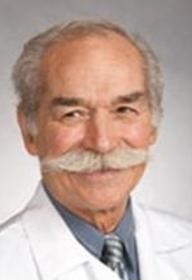August 2014 Arizona Thoracic Society Notes
 Saturday, August 30, 2014 at 3:33PM
Saturday, August 30, 2014 at 3:33PM The August 2014 Arizona Thoracic Society meeting was held on Wednesday, 8/27/14 at Scottsdale Shea Hospital beginning at 6:30 PM. This was a dinner meeting with case presentations. There were about 30 in attendance representing the pulmonary, critical care, sleep and radiology communities.
A presentation was given by Julie Reid of the American Lung Association in Arizona on their Lung Force initiative. This is an initiative to make women more aware that lung cancer is the number one cause of cancer deaths in women. There will be a fund raising Lung Force Walk on November 15, 2014 in Phoenix. More information can be found at http://www.lungforce.org/walk-events or http://www.lung.org/associations/states/arizona/local-offices/phoenix/ or contact Julie Reid at JReid@Lung Arizona.org or (602) 258-7505.
A discussion was instigated by Dr. Parides on whether there is an increased risk of clinical Valley Fever in patients previously treated who begin therapy with biological therapy for rheumatoid arthritis. The common practice has been to initiate azole antifungal therapy in patients who begin biologics for rheumatoid arthritis. Although all agreed there was an increased risk of Valley Fever in patients treated with biological therapy, none were aware of any patients who developed Valley Fever who had previously been treated with azole therapy. This was extended to similar discussions including whether patients who had previously been treated for a +PPD need anti-tuberculosis therapy. This has been common practice, but again, none were aware of any cases or literature.
Lewis Wesselius presented a 66 year old man with a history of multiple pneumonias and skin infections. The patient was short with a prominent forehead. Immunoglobulin evaluation revealed a normal IgG and IgM but a markedly elevated IgE of 7419 kIU/mL (normal <380 kIU/mL). The patient was diagnosed with hyperimmunogloublin E syndrome, also known as Job's syndrome. For a review of this case as well as a differential diagnosis of elevated IgE please see the "September 2014 Pulmonary Case of the Month: A Case for Biblical Scholars" which will be posted on 9/1/14.
There being no further business the meeting was adjourned about 7:45 PM. The next meeting will be Tucson on Wednesday, September 24. Time and location to be announced.
Richard A. Robbins, MD
Reference as: Robbins RA. August 2014 Arizona thoracic society notes. Southwest J Pulm Crit Care. 2014;9(2):145. doi: http://dx.doi.org/10.13175/swjpcc114-14 PDF


